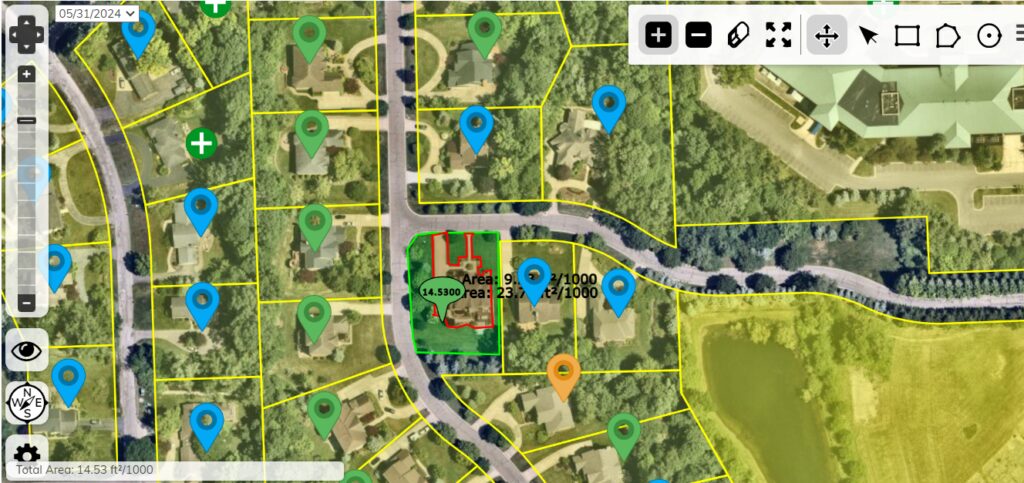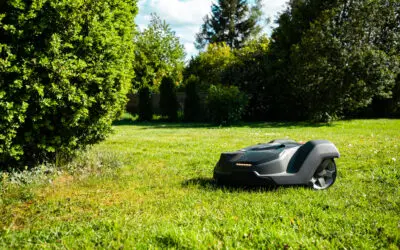Top 5 Ways to Build Route Density for Lawn Care and Landscaping Businesses
In the lawn care and landscaping industry, efficiency is key to profitability. Every minute spent driving from one house to another is a drain on your resources. The more time your crews spend on the road, the less time they spend providing services, which impacts your labor costs, fuel expenses, and overall productivity. Building route density — creating tighter, more concentrated service routes — helps reduce these inefficiencies and will increase your daily production value. Route density isn’t just about convenience; it’s one of the most important aspects of running a profitable lawn care business, especially when offering recurring services like fertilization and maintenance. Here’s a look at some top ways to effectively build route density.
1. Purchase Marketing Lists Based on Your Ideal Customer
 One of the most effective ways to build route density is by targeting the right customers in the right locations. Acquiring the right data is the key. It’s essential to know your market and understand who the right prospects are: those who are most likely to purchase your services. Determining who your “ideal customer” is, what boxes they check, and where they live will help you target the right areas. By acquiring marketing data that matches your ideal customer, you ensure that every marketing dollar is spent wisely. This approach avoids wasting resources on irrelevant prospects, instead focusing on those most likely to convert and fit within your desired service areas.
One of the most effective ways to build route density is by targeting the right customers in the right locations. Acquiring the right data is the key. It’s essential to know your market and understand who the right prospects are: those who are most likely to purchase your services. Determining who your “ideal customer” is, what boxes they check, and where they live will help you target the right areas. By acquiring marketing data that matches your ideal customer, you ensure that every marketing dollar is spent wisely. This approach avoids wasting resources on irrelevant prospects, instead focusing on those most likely to convert and fit within your desired service areas.
Pro Tip: Don’t forget to include new homeowner lists in your marketing data. With over 400,000 people moving in the U.S. every week, targeting new homeowners — who are often in immediate need of lawn care services — can be a goldmine for building route density.
2. Use Your Existing Data
 Your existing customer data is a powerful asset in building route density — if you know how to use it most effectively. Using mapping tools, you can visually identify and target clusters of potential customers within specific neighborhoods or streets.
Your existing customer data is a powerful asset in building route density — if you know how to use it most effectively. Using mapping tools, you can visually identify and target clusters of potential customers within specific neighborhoods or streets.
For example, with RealGreen, you can generate a report of customers who are in “marketing” or “estimate” status and send that data to your mapping tool. From there, you can “lasso” groups of prospective customers on one street or in one neighborhood.
Once you’ve identified the areas you want to go after, you can initiate targeted marketing campaigns — whether through email, prepay letters, or direct mail — to these prospects. You can send neighborhood production postcards that target new residents near your active customers, helping you lock in sales before your competition has a chance.
This pinpoint approach enables you to concentrate your marketing efforts in areas that haven’t yet been fully penetrated, maximizing your chances of converting more leads in a single neighborhood and creating another rich, dense route.
3. Deploy a Mobile App for Door-to-Door Marketing
 Door-to-door marketing can be highly effective in building route density, especially when combined with mobile technology that allows your techs to engage with prospects on the spot. Start by targeting saturated neighborhoods: Pull marketing prospects, cancellations, and estimates for areas where you already have a strong presence. Then, send your techs out to these neighborhoods with a mobile app that enables them to add new customers on the spot, measure lawns, and even generate estimates and take payments. The RealGreen mobile app makes it easy.
Door-to-door marketing can be highly effective in building route density, especially when combined with mobile technology that allows your techs to engage with prospects on the spot. Start by targeting saturated neighborhoods: Pull marketing prospects, cancellations, and estimates for areas where you already have a strong presence. Then, send your techs out to these neighborhoods with a mobile app that enables them to add new customers on the spot, measure lawns, and even generate estimates and take payments. The RealGreen mobile app makes it easy.
4. Don’t Sleep on Signage
Traditional marketing tools like door hangers and yard signs are still effective ways to build brand awareness — so when your customers’ neighbors are looking for lawn care, yours is the first name that will come to mind.
Old-school tactics like “clover leafing” — where you can increase visibility and generate new leads by placing door hangers, flyers, and other promotional materials on the doors of the homes surrounding your current customers’ property — can still be very effective. The idea is to target neighboring homes that might be interested in the same services, leveraging the presence of an existing customer to attract new business in a concentrated area.
5. Get Creative With Your Software Tools
Many lawn businesses already use software tools like RealGreen to manage their operations, but there may be features you’re not fully taking advantage of that could help build route density.
For example, RealGreen’s “Add Neighbors” tool allows you to identify homes near your current customers that aren’t yet part of your client base. You can measure these lawns and bring them into your marketing funnel, adding them to email drip campaigns or door-to-door outreach efforts.

Similarly, the “Find My Neighbors” tool can be used when doing phone estimates to identify existing customers near a prospective client. This information can help you make more informed decisions about route planning, pricing, and marketing strategies.
Finally, ensure you’re using a routing software like Dynamic Routing that optimizes routes based on traffic patterns, business rules, and other constraints, ensuring that you create the most efficient routes possible, saving time and money while increasing your route density.
RealGreen has the tools you need to build route density!
RealGreen has the tools you need to implement these smart strategies — reducing wasted time and resources, increasing daily production and ultimately running a more profitable lawn business. Our entire suite of software and solutions is designed for your success. Ready to learn more? Schedule a free demo to see how you can start building your route density — and your business — today.



